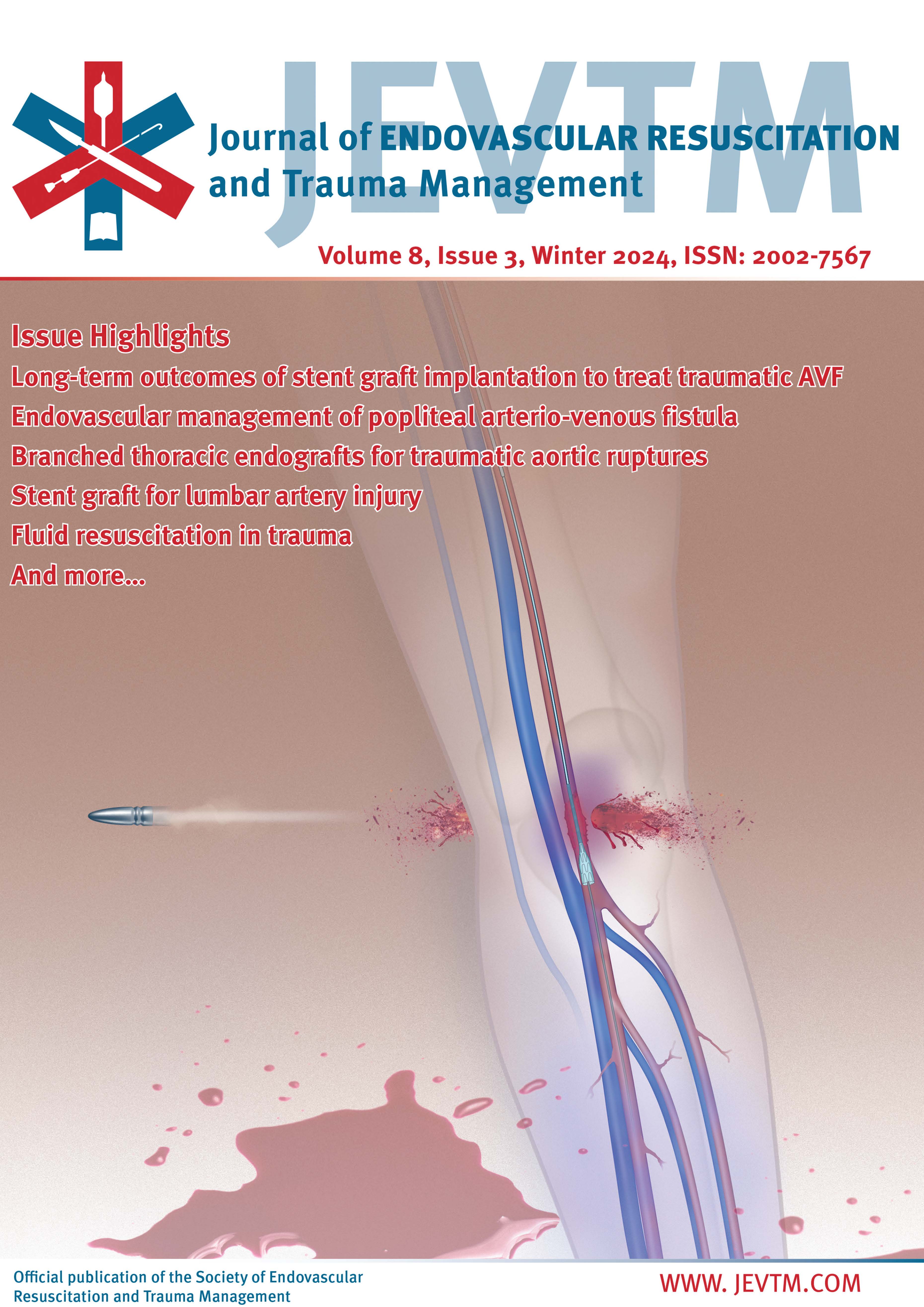Fluid Resuscitation and Trauma Management: Permissive Hypotension, Restricted Volume, and Beyond
DOI:
https://doi.org/10.26676/jevtm.26617Keywords:
Permissive Hypertension, Restricted Fluid, Trauma-Induced Coagulopathy, Damage Control ResuscitationAbstract
Uncontrolled hemorrhagic shock is responsible for 40% of deaths among those under the age of 35, making it the primary cause of mortality in this age group. An optimal fluid therapy strategy can restore tissue perfusion and oxygenation in trauma patients. However, excessive fluid resuscitation can result in glycocalyx shedding, which leads to globally increased permeability syndrome, leading to complications such as changes in tissue perfusion, abdominal compartment syndrome, and respiratory distress syndrome. Permissive hypotension is a resuscitation strategy that aims to maintain systolic blood pressure below the normal threshold. Restricted volume replacement or restricted fluid resuscitation is a resuscitation principle that limits the amount of fluid used to prevent the worsening of diluted coagulopathy, hypothermia, and acidosis. This review article aims to discuss the recent concept of fluid therapy in trauma and to connect the understanding of fluid therapy in trauma with related topics such as trauma-induced coagulopathy and damage control resuscitation.
Downloads
Published
How to Cite
Issue
Section
License
Copyright (c) 2024 Rizki Rahmadian, Ruth Evlin Margaretha, Zikril Ariliusra, Handyka Milfiadi

This work is licensed under a Creative Commons Attribution 4.0 International License.
Authors of content published in the JEVTM retain the copyright to their works.
Articles in the JEVTM are published under the terms of a Creative Commons CC BY 4.0 license, which permits use, downloading, distribution, linking to and reproduction in any medium, provided the original work is properly cited.




